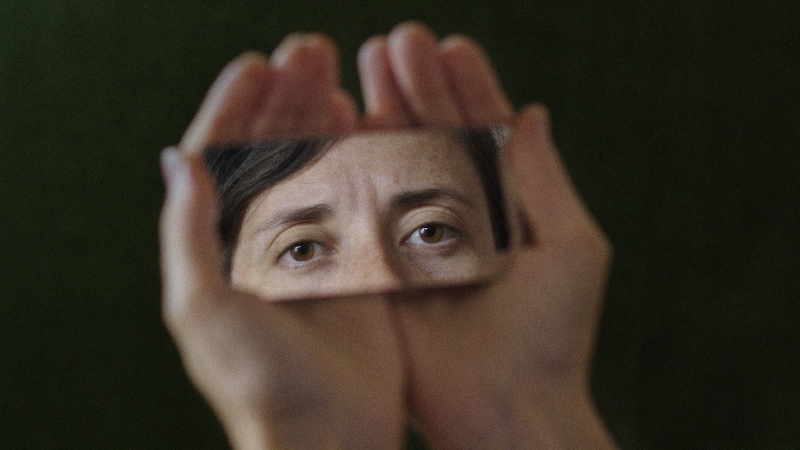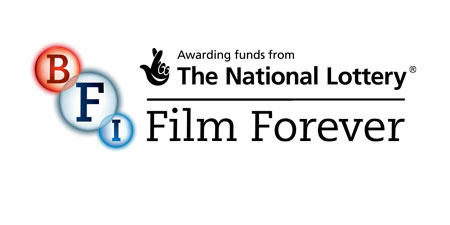Visions of Europe: The Metamorphosis of Birds LUMI Review
08 April 2022
Fionntán Macdonald, LUMI young programmer, reviews Catarina Vasconcelos' The Metamorphosis of Birds, screening as part of QFT's Visions of Europe season.

Written and directed by Portuguese auteur Catarina Vasconcelos, The Metamorphosis of Birds (2020) is lyrical, thoughtful and beautiful while being almost impossible to define. Part documentary, part memoir and part fiction, this exploration of the director’s family history starts with an exchange of love letters yet ends in the wake of two devastating losses in a melodious exploration of memory, grief and motherhood.
From the opening close up of her father’s eyes, Vasconcelos establishes an immediate connection to the previous generation, with the accompanying narration coming from the perspective of the director’s grandfather. While the narrative voice shifts to various perspectives throughout, this is the foundation Vasconcelos builds her generational story on; taking the form of a monologue directed towards his late wife Beatriz who’s intangible influence looms large over this piece. His focus is retrospective and forlorn, framing the ensuing narrative as something of a familial biography, a genealogical record rendered with exquisite artistry.
From these first moments Vasconcelos begins to establish some of the key visual metaphors she will utilise throughout this intensely symbolic work, cutting from her father’s eyes to a religious relic, the eyes of Saint Lucy the patron saint of sight. Her grandfather’s voice requests that they remain with him in his old age, if only to see Beatriz in his memories.
This delicate, compassionate opening does so much to illuminate the film that follows by outlining the themes in broad, vibrant strokes before the experimentation in form begins. The use of disembodied voice over is ethereal, somewhat haunting, and with the camera’s focus on domesticity the story almost seems to be told from the perspective of family ghosts. The camera lingers frequently on objects, particularly the domestic and often with anthropomorphised features, which gives the audience a feeling of exploring a vacant residence, a home left deserted but for the phantoms of the past.
There’s a distinct impression that grief has frozen this family in time, some of the static compositions being reminiscent of still life paintings, and indeed when they are in mourning an intangible voice observes that the world is now a painting to them all, frozen in time. This carries throughout every frame and the vintage aesthetic of the cinematography is enhanced greatly by shooting on 16mm film stock. Itself a somewhat antiquated format, a distinct film grain is etched into the celluloid on 16mm, an effect that cannot be replicated with digital photography. The result of this process is a series of lush but enigmatic compositions which are at times reminiscent of renaissance oil paintings.
Furthering the visual virtuosity is the choice to present the film in ‘Academy Ratio,’ a boxy aspect ratio most prevalent in Hollywood films of the 1930s. This touch of idiosyncratic flare gives the film a nostalgic feel that notably limits the frame’s horizontal axis and can be used to visually entrap the subject, a subtle way of illustrating the effect grief has had on this family.
There’s a playfulness to this film’s experimentation, a formalism that invites diversion from established norms without veering from its emotional core, and when Vasconcelos embraces her more whimsical instincts it’s hard not to be charmed by the spirit of invention. Vasconcelos has spoken at length about her intentions and desire to create a polyphonic film, a layered piece of filmmaking that replicates the effect of a choir’s overlapping voices, and truly this is a symphony of sound and image. The Metamorphosis of Birds is a distressed dreamscape, a mosaic of memory, memoir and myth that is enthralling to behold even if its structure may alienate the more narratively inclined.
It took between five and six years for Vasconcelos to produce this intensely personal project, largely because she required this time to establish distance from the subject. She found that her family were hardly forthcoming with information as to them it was too intimate, too painful. This roadblock would subsequently enlighten Vasconcelos to the central theme of her work: the family mysteries, the blank spaces in a shared history for things left untold and how this absence of information invited her own imagination.
This film in its purest essence is about two women, neither of whom appear, but who’s absence can be felt profoundly in the melancholic reflections of the children they have left behind. Standing as a heartfelt tribute to her own mother and grandmother, this picture not only invokes the dead but awakens them in glorious harmony.
- written by LUMI programmer Fionntán Macdonald




